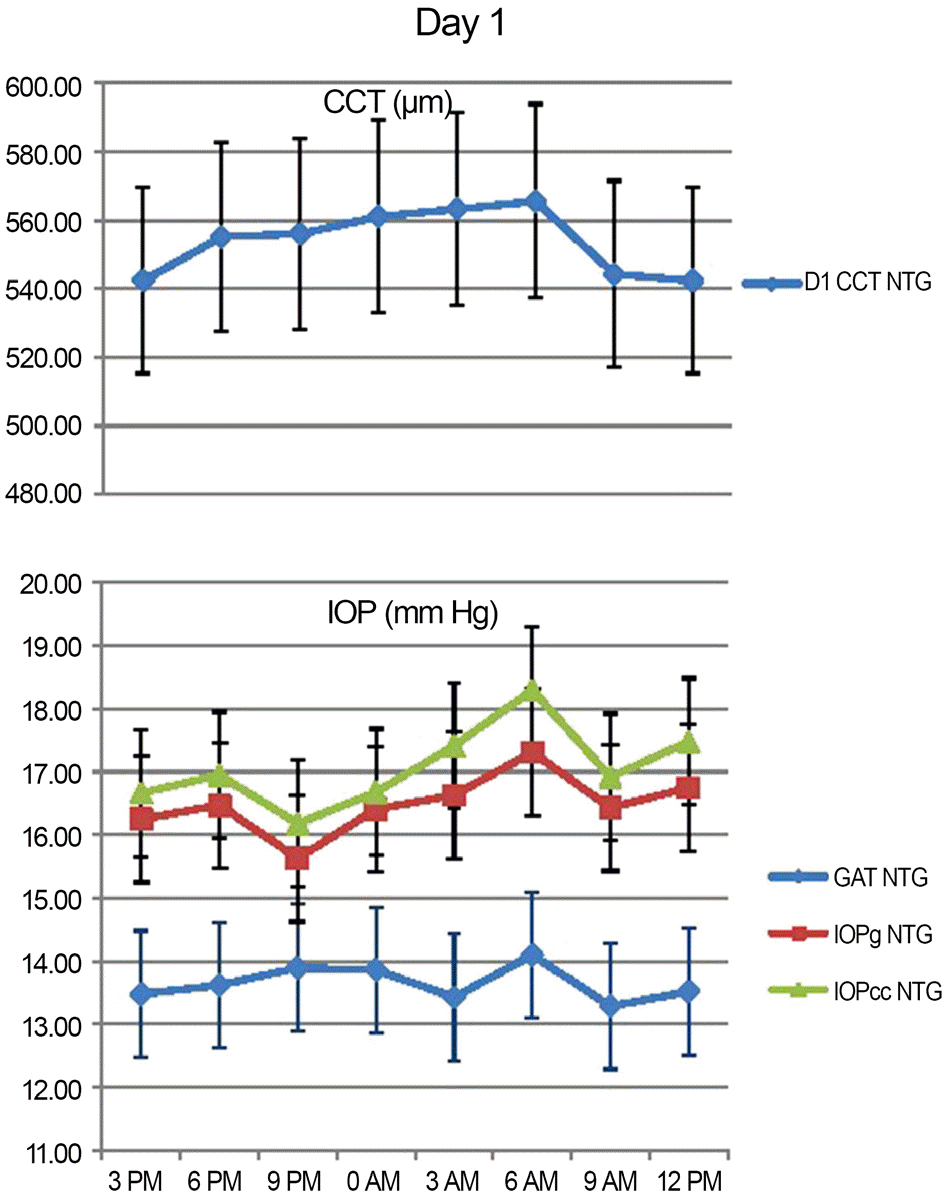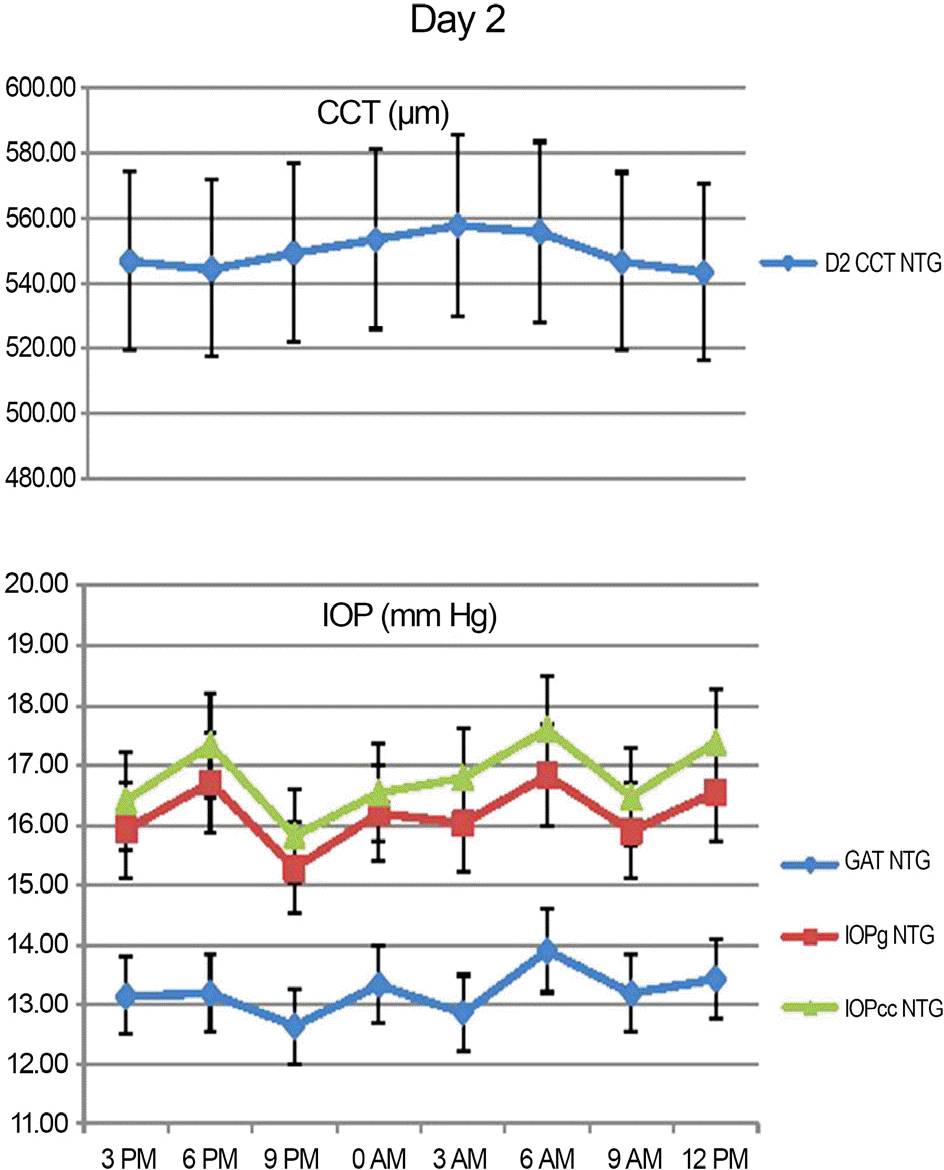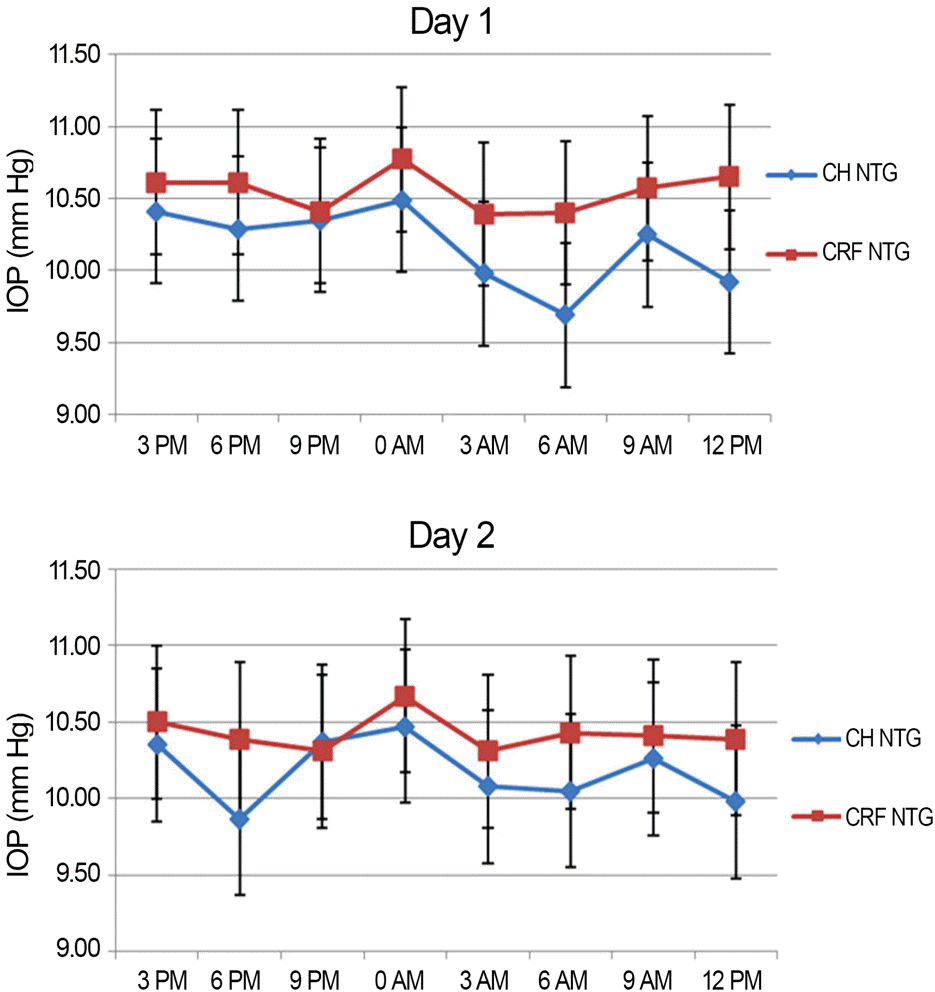Abstract
Purpose
Methods
Results
References
 | Figure 1.Diurnal measurements of GAT IOP, IOPcc, IOPg and CCT in normal tension glaucoma patients during 1st 24-hr period. IOP (GAT IOP, IOPcc, IOPg) reaches its peak at 6 AM on the 1st day and the time of the peak IOP measurements matched the time of peak CCT measurements. CCT = central corneal thickness; NTG = normal tension glaucoma; IOP = in-traocular pressure; GAT = Goldman applanation tonometer; IOPg = Goldman-correlated intraocular pressure; IOPcc = corneal-compensated intraocular pressure factor. |
 | Figure 2.Diurnal measurements of GAT IOP, IOPcc, IOPg and CCT in normal tension glaucoma patients during 2nd 24-hr period. IOP (GAT IOP, IOPcc, IOPg) reached its peak at 6 AM and 6 PM on 2nd day. But the time of the peak IOP measurements are not matched with the time of peak CCT measurements thoroughly. CCT = central corneal thickness; NTG = normal tension glaucoma; IOP = intraocular pressure; GAT = Goldman applanation tonometer; IOPg = Goldman-cor-related intraocular pressure; IOPcc = corneal-compensated in-traocular pressure factor. |
 | Figure 3.Diurnal measurements of CH and CRF in normal tension glaucoma patients during 48-hr period (Day 1 and Day 2). Diurnal fluctuation of CH and CRF show no significantly dif-ference on Day 1 and Day 2 (Day 1 CH: p = 0.183; Day 2 CH: p = 0.139; Day 1 CRF: p = 0.514; Day 2 CRF: p = 0.706). IOP = intraocular pressure; CH = corneal hysteresis; NTG = normal tension glaucoma; CRF = corneal resistant factor. |
Table 1.
Values are presented as mean ± SD unless otherwise indicated. NTG = normal tentsion glaucoma; SE = spherical equivalent; CCT = central corneal thickness; GAT = Goldman applanation tonometer; IOPg = Goldman-correlated intraocular pressure; IOPcc = corneal-compensated intraocular pressure factor; CH = corneal hysteresis; CRF = corneal resistant factor.
Table 2.
Values are presented as mean ± SD unless otherwise indicated. CCT= central corneal thickness; GAT = Goldman applanation tonometer; IOP = intraocular pressure; ORA = ocular response analyzer; IOPg = Goldman-correlated intraocular pressure; IOPcc = corneal-compensated intraocular pressure factor; CH = corneal hysteresis; CRF = corneal resistant factor. * p-value based on t-test.
Table 3.
Values are presented as mean ± SD unless otherwise indicated. IOP = intraocular pressure; GAT = Goldman applanation tonometer; ORA = ocular response analyzer; IOPg = Goldman-correlated intra-ocular pressure; IOPcc = corneal-compensated intraocular pressure; SD = stamdard deviation.* p-value based on t-test
Table 4.
p-value by repetaed measures analysis of variance (ANOVA). IOP = intraocular pressure; CCT = central corneal thickness; GAT = Goldman applanation tonometer; ORA = ocular response analyzer; IOPg = Goldman-correlated intraocular pressure; IOPcc = corneal-compensated intraocular pressure factor; CH = corneal hysteresis; CRF = corneal resistant factor.




 PDF
PDF ePub
ePub Citation
Citation Print
Print


 XML Download
XML Download